


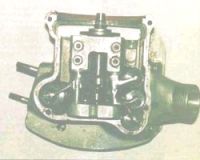
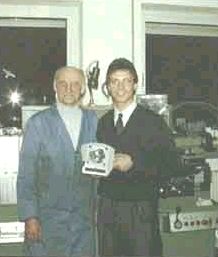



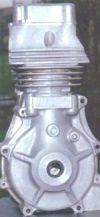
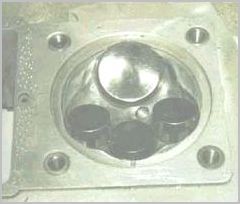
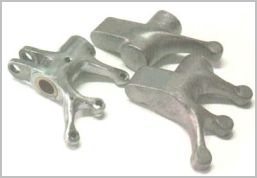

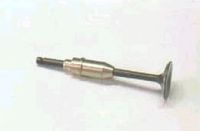
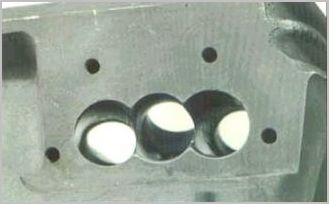
Franco Oliano, who has been an avid contributor to these pages where Italian bred machines are concerned, has unearthed the story behind the RB232 Cylinder Head.
The article originates from a 1993 issue of an Italian magazine called 'Mototecnica', and whilst being a very lengthy article, a brief translation was sent to us courtesy of speedway rider Nicola Roverso.
In 1992 Renato Battaglia, an Italian technician and former rider from Lonigo, patented the RB 232 cylinder head. He got the idea of realizing a speedway engine a few years before and his aim was to obtain a substantial output at middle engine speeds already. Of course, he had to respect the restrictions laid on speedway units by the current regulations that were 500 cc swept volume, 34 mm carburettor, four-stroke cycle and fixed engine's moment of inertia.
The last restriction regards the maximum allowed number of valves, which may be four. In this connection, Battaglia took Otto Lantenhammer's previous experience as a starting point. The German tuner had developed a five valve cylinder head, which showed great potential through the first tests. So much so that the F.I.M. decided to limit to four the number of valves, in order to prevent the proliferation of special engines similar to Lantenhammer's one. So Battaglia, a fervent believer in the superiority of a five valves timing system, worked out a unit with three inlet valves and one big exhaust valve.
The project was submitted to Lantenhammer's judgement, (Pictured top Left) who later agreed to contribute to the definitive tuning. Up to the present several riders have tested the RB 232 unit, and U21 World champion, Joe Screen, has raced it on a regular basis.
The timing system has only one camshaft driven by a chain with a manual turnbuckle, the cams are two. The valves are driven by rockers operating on rollers, both in the fulcrum and the contact with cams, while there is a classic adjuster screw at the other end. The rockers are made of special steel 38 NiCD4.
Looking at the inlet port from the carburettor side, an observer can note how progressively the port divides into three branches, in order to parcel the flux in the most equal way. A longitudinal section shows how the three branches are perfectly rectilinear and of equal length.
The inlet rocker is absolutely unusual, with its three arms to drive the respective valves:. Battaglia paid a special attention to the arms symmetry to avoid oblique thrusts caused by the remarkable distance between the two lateral branches. The rocker arms' radius is the same for each valve to obtain equal lifts.
The central inlet valve forms a 12,5° angle with the cylinder axle, while the lateral ones form a 20,5° angle. The exhaust port is rectilinear too, 'downstream' there is an aerodynamic contour to reduce gas turbulence due to the valve stem presence. The exhaust kinematism is more conventional, the rocker drives the valve by means of the usual adjuster screw.
The inlet valves have a 5mm stem and a 11mm lift, while the exhaust one has a 7mm stem and a 10,5mm lift. Each valve has two valve springs whose cups are made of Ergal. The valve guides are made of bronze.
The 10mm sparkplug is placed almost in the middle of a somewhat peculiar combustion chamber, the inlet valves' seatings are connected with the exhaust valve's one to generate laterally two 'squish' areas. The piston is provided by 'Asso' firm with a rough 'ceiling' and then worked to obtain deep seatings for the valves' heads. The compression ratio may vary according to the tuning requirements, from a 12,5:1 minimum to a 17:1 maximum.
The RB 232 cylinder head has been placed on a Godden engine with modified cranks and lubrication system. The bore is 86mm and the stroke is 85,5mm. The coupling axle is 34,5mm in diameter, the connecting-rod has a 164,5mm wheelbase, while the gudgeon pin is 20mm in diameter.
The lubrication circuit has no sump: the oil being carried to the cylinder head by the timing chain, which 'fishes' in the crankcase' lower part. The cranks are lubricated according to the same scheme used by 'Husqvarna' (RAL system).
The crankcase is hermetically closed and communicates with the external space, which contains the oil, by means of three unidirectional valves. Battaglia's unit can give 55HP at 8.000 rpm.